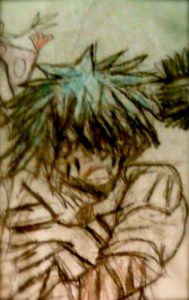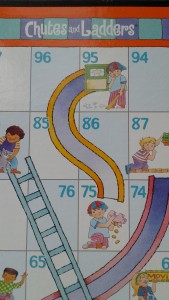A new protagonist, wedged between hero and villain, is America’s favorite son – the anti-hero. Bad attitude, morally challenged and dark disposition replaces the patriotic, courageous and life-sacrificing hero. The anti-hero is usually male, might be the lesser of two evils and happens to be fighting for the right side – but for all the wrong reasons. In the end, either the anti-hero discovers his or her inner hero or meets a tragic end.
Functioning on a sliding scale of barely bad to entirely evil, the anti-hero is in mini-series, comic books, literature, video games and film. Perhaps the rise of the anti-hero reflects growing disappointment with public leaders who fall short of expectations. As school children train for active shooter drills and terrorism knows no regional boundaries, societal norms are shifting. The anti-hero, while fulfilling self-ambitions, can also be a rebellious vigilante, quelling corruption, inequity and prejudice. Villainous, dark and beholden to no law or moral code, this new protagonist challenges status quo values keeping evil in check. The darkness that exists in a main character provides awareness to the potential for evil in all humans, races and religions.
Yet, the anti-hero endures and rallies to the darkness in the world. Examples of popular anti-heroes are listed below:
1) Television Series
Breaking Bad – Walter White
House of Cards – Frank Underwood
The Sopranos – Tony Soprano
2) Comic Books
Deadpool
Wolverine
John Constantine
3) Literature
Lolita by Vladimir Nabokov – Humbert Humbert
The Master and Margarita by Mikhail Bulgakov – Woland
The Great Gatsby by F. Scott Fitzgerald – Jay Gatsby
Lord of the Rings by J. R. R. Tolkien – Gollum
Hamlet, Macbeth, Othello by Shakespeare
4) Gaming
Dead Red Redemption – John Marston
Deadpool – Wade Winston Wilson
Grand Theft Auto – Tommy Vercetti
5) Films
Despicable Me – Gru
A Fistful of Dollars – the man with no name (or any Clint Eastwood film)
John Wick – John Wick
Do you have a favorite anti-hero or one you love to hate? Add to my list, but I do have to warn you. After researching and sorting my list of anti-heroes, I needed a dose of hero to brighten my day. If you need a hero fix, search for one of these music videos.
Hero – Music/Video
1949-1957 The Lone Ranger Opening Theme Song
1980 Flash – Queen
1984 Holding Out for a Hero – Bonnie Tyler
1990 Heros and Friends – Randy Travis
1998 My Hero – Foo Fighters
2001 Superman (It’s Not Easy) – Five for Fighting
2006 Everyday hero – Smash Mouth
2011 Kill All Your Heroes – AWOLNATION

